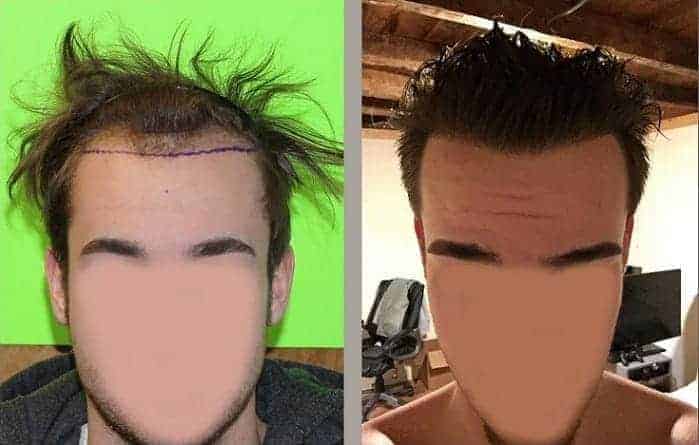Creating a “Low” Hairline with Hair Transplant Surgery?

Patients, especially younger patients, frequently request low, flat hairlines. It’s understandable; if a patient is taking the “plunge” with hair transplant surgery, why wouldn’t they go for the most aggressive transformation possible? But is the quest for the youthful hairline appropriate? Should very low hairlines be recreated with hair transplant surgery? When is it right to go low? And when should a more recessed, “age-appropriate” hairline be selected?
The first thing to remember is that low, flat hairlines can be successfully recreated with modern hair transplant techniques. Particularly with proper use of 1-haired “single” follicular units in a natural, staggered manner in the frontal hairline and “dense packing” techniques. However, just because something can be done doesn’t necessarily mean that it should be done.
There are a few problems with creating very low, flat hairlines:
- All patients have a limited number of donor follicles available and hair loss is a progressive condition. If a patient starts very low and flat with the hairline and continues thinning in other areas of the scalp, there is a chance that the patient may run out of grafts and not have the capability to treat additional parts of the scalp. This phenomenon of using too many grafts on a low, flat hairline and running out of follicles for newly receded regions is referred to as “frontal loading,” and it is a real concern.
- Hair transplants are permanent and a low flat hairline that looks good on a young patient may not age well or look good as that patient gets older. The goal when creating a hairline is to design something that will look as good and appropriate at age 65 as it will at 25. A transplanted hairline will not change, so it must be designed with this in mind.
- Hairlines are naturally imperfect. Even individuals with little to no hair loss still have irregularities, areas of slight recession, and differing heights. If a transplanted hairline is created too perfectly in a low, flat manner, it may not look natural.
Having said that, there are still times when a lower, flatter hairline is appropriate. This includes instances where patients have stable, minimal loss and a family history of low hairlines, patients who have already had work where a lower hairline was created (and a second transplanted is needed to improve it), or in certain patients with a facial shape that naturally calls for a lower design — which may include temple reconstruction as well.
There are also times when creating a low, flat hairline should absolutely be avoided. This includes young patients with the potential for aggressive loss, older patients with advanced loss and limited donor, and patients with certain facial shapes (if a patient states that he “never had a low hairline,” then it’s probably not right to create one now).
It is also important to remember: you can always lower a higher hairline up the road, but it’s very difficult to raise a lower hairline. If a patient receives a higher hairline now and their hair loss permanently stabilizes, the hairline can be easily lowered with additional transplants. But if the hairline is created too low to begin with and the patient wants or needs to reverse it, the process is difficult and not always successful.
But, usually the best course is to create an “age-appropriate” hairline from the get-go. This describes a natural approach which re-frames a patient’s face and creates appropriate proportions, and will continue to “age well;” a hairline that looks as good at 25 as it will at 65. Contact an experienced hair transplant doctor to book a consultation. It is there that you will work out a plan that will work specifically for you. There is no “one size fits all” in the hair transplant world.
Here are some examples of this approach:
Dr. Blake Bloxham and Dr. Alan Feller





